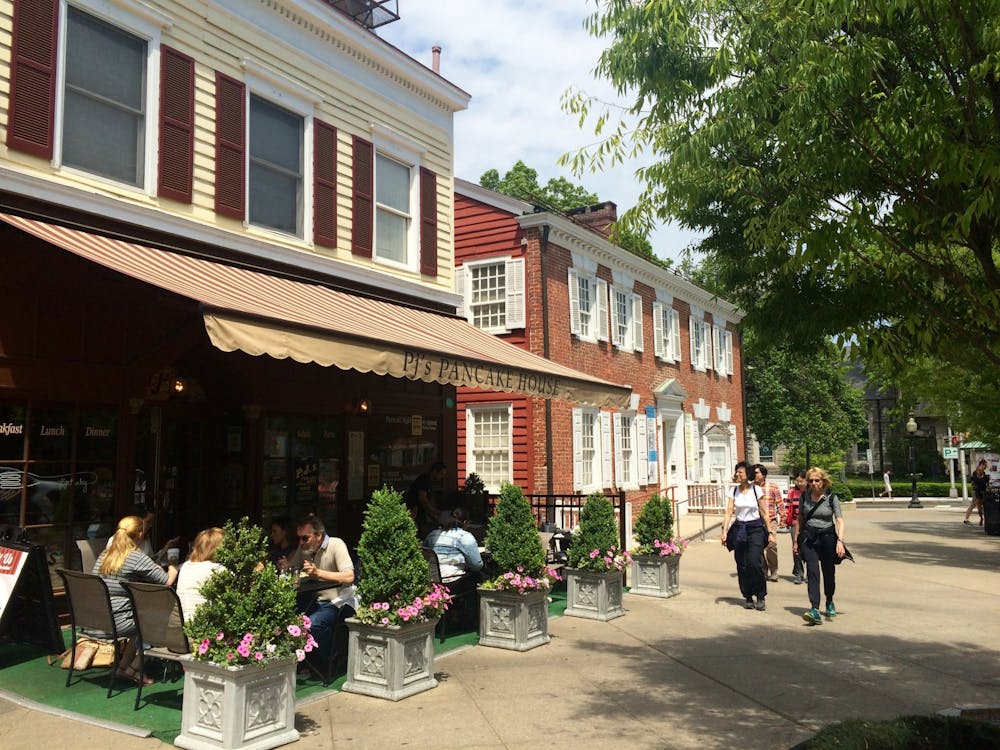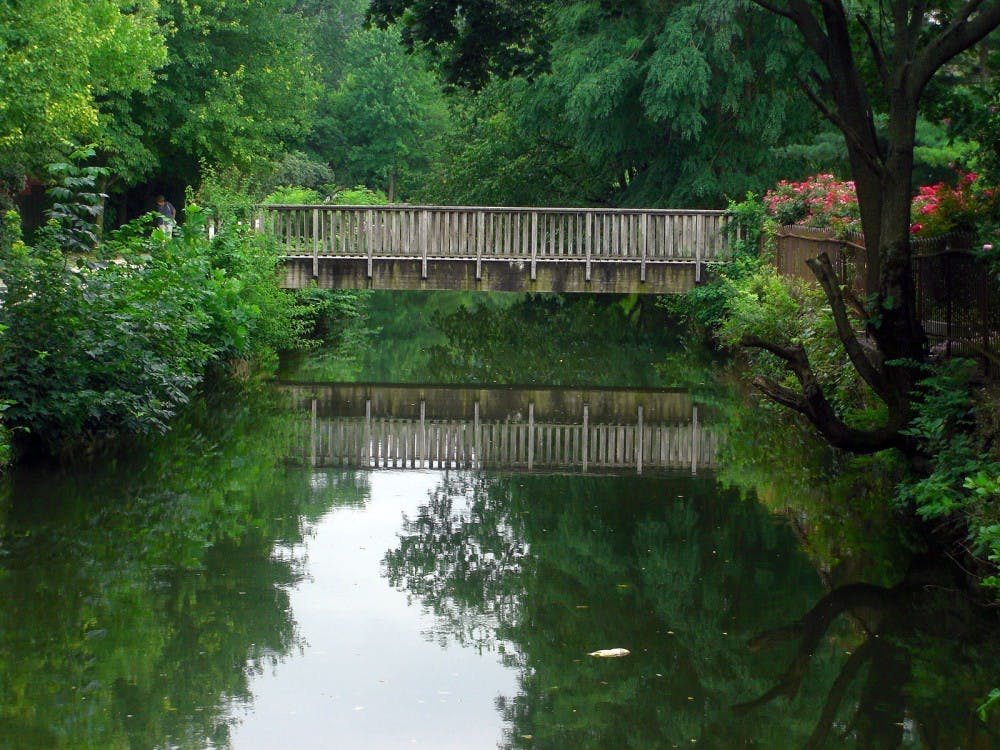The revolution may not be televised - but "Body Politic," a senior thesis exhibit by E. Lew '10, suggests that it can be painted. In the exhibit, on display in the Lucas Gallery at 185 Nassau St., the radical politics of Jean-Michel Basquiat meet the monumental aesthetics of Boris Iofan.
Her exhibit comprises a space split between the monochromatic "Angel Island Series" and other more vividly hued works, which results in an uneasy feeling that the collection is bifurcated and inchoate. But the halves turn out to rhyme and relate, making the Basquiat-Iofan quality of the collection more parallel than paradox.Given the lack of side panels, it is rather difficult to interpret all the references in the artwork. In addition, not knowing Chinese will considerably affect the viewer's understanding of the "Angel Island Series." As for the rest of the paintings, unfamiliarity with contemporary China will reduce the exhibit to its optical constituents - and unfortunately so, for in this respect there is not much to see.The show, which covers the leftmost wall of the gallery, includes six portraits that feature Chinese characters inscribed over the subjects' faces. The modeling of the writing lends it a chiseled quality, engraving a sense of monumentality into the portraiture. According to Lew, these texts are poems carved into barracks at an early 20th-century detention center for immigrants. In the mode of Basquiat, then, Lew's series embodies a historical exploration of Asian-Americans as "the Other." It reads rather like an inventive and fascinating series of mug shots.But, dark and unsmiling though they may be, the subjects are traditionally displayed. The monumental valence of the inscribed characters further cements the sense that these portraits are depictions of valor, which forgoes the chance to interrogate the ultimate foundation for immigration at Angel Island. By memorializing the immigrants' suffering, Lew seems too ready to historicize it - despite its continual recurrence in American society.Fortunately, the other half of the exhibit lends a bit of context to this romantic notion. The pieces on this wall, which are vibrant and monumental, prove subtly probing.The standout here is "My Clique," a testimonial to the party-line narrative of the Chinese regime. The phrase "March of the Volunteers" crowns a mural-esque crowd of smiling Chinese figures. The Chinese, bedecked in Olympic-logo polo shirts, seem arrayed in patriotic anticipation of Chinese glory. At the center towers an overwhelming Mao Zedong, in Olympic polo shirt and weightlifting belt, who seems to protrude from the canvas.The other pieces are similar. "Circle of Life" recreates the famous scene from "The Lion King" with a diapered Kim Jong-Il and a beaming Kim Il-Sung filling the roles of Simba and Rafiki, respectively. And "Bambi's Forest" depicts a pastoral sward with a couchant Hu Jintao.In all of the pieces here, the attention paid to China's own outsiders presents itself in appropriately critical form, problematizing the Communist Party's monolithic conceptions of Chinese identity. Lew suggests that China's national self-conception has become Disney-fied: Mao's overwhelming paunch and the glittering Olympic palaces monopolize the canvas in the same way the Communist Party purports to monopolize public discourse in China today.
ADVERTISEMENT
ADVERTISEMENT







